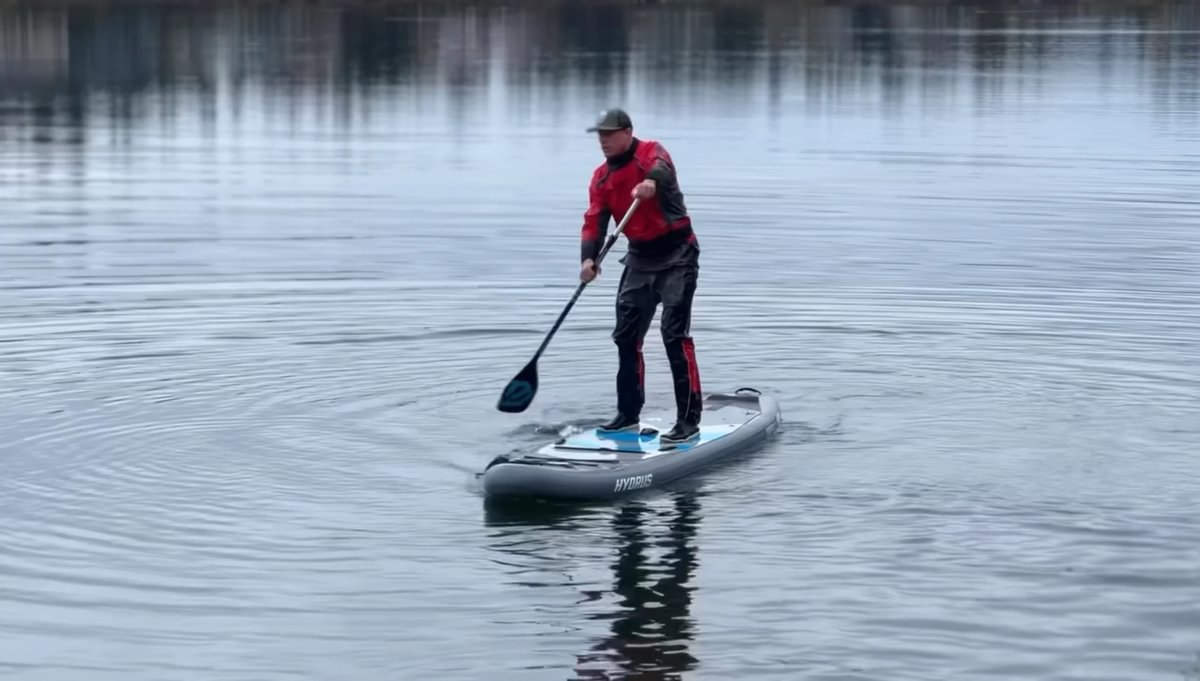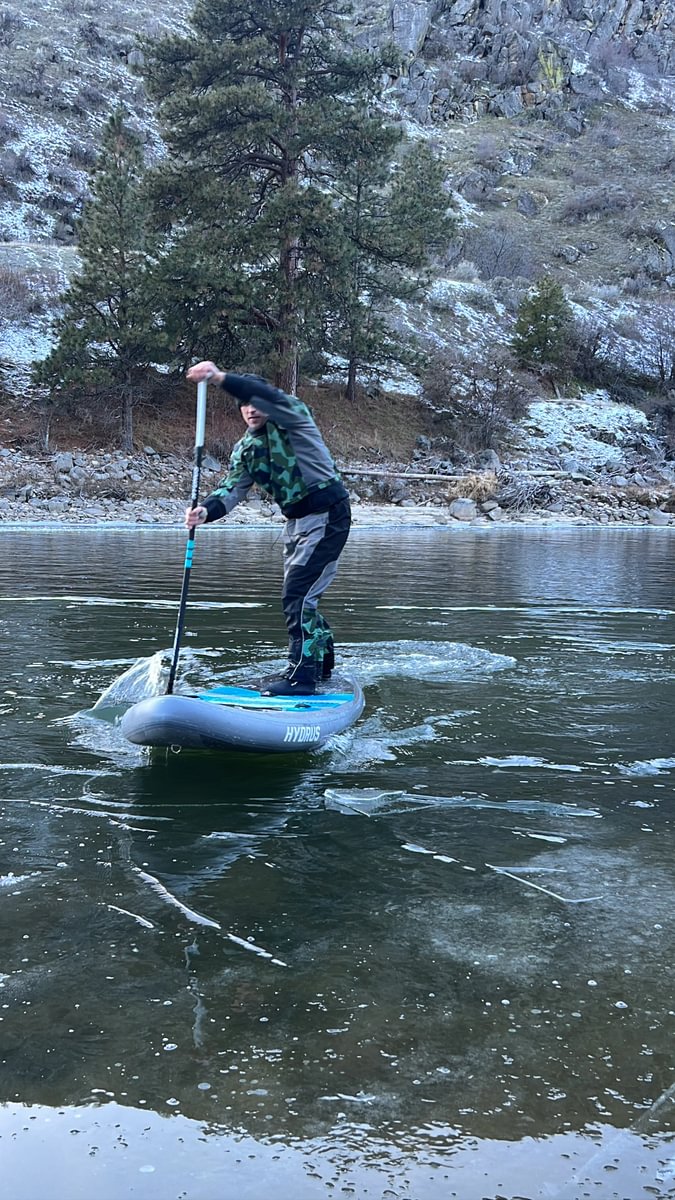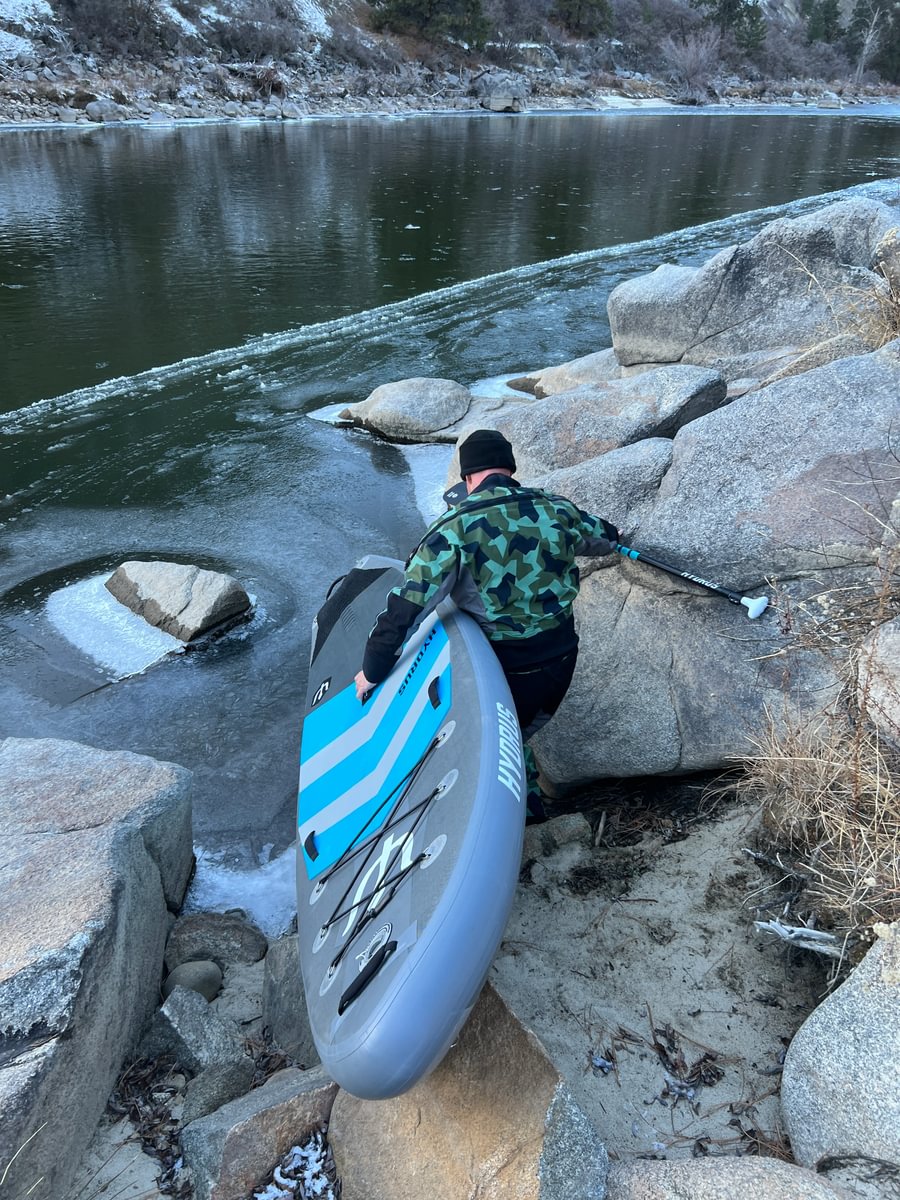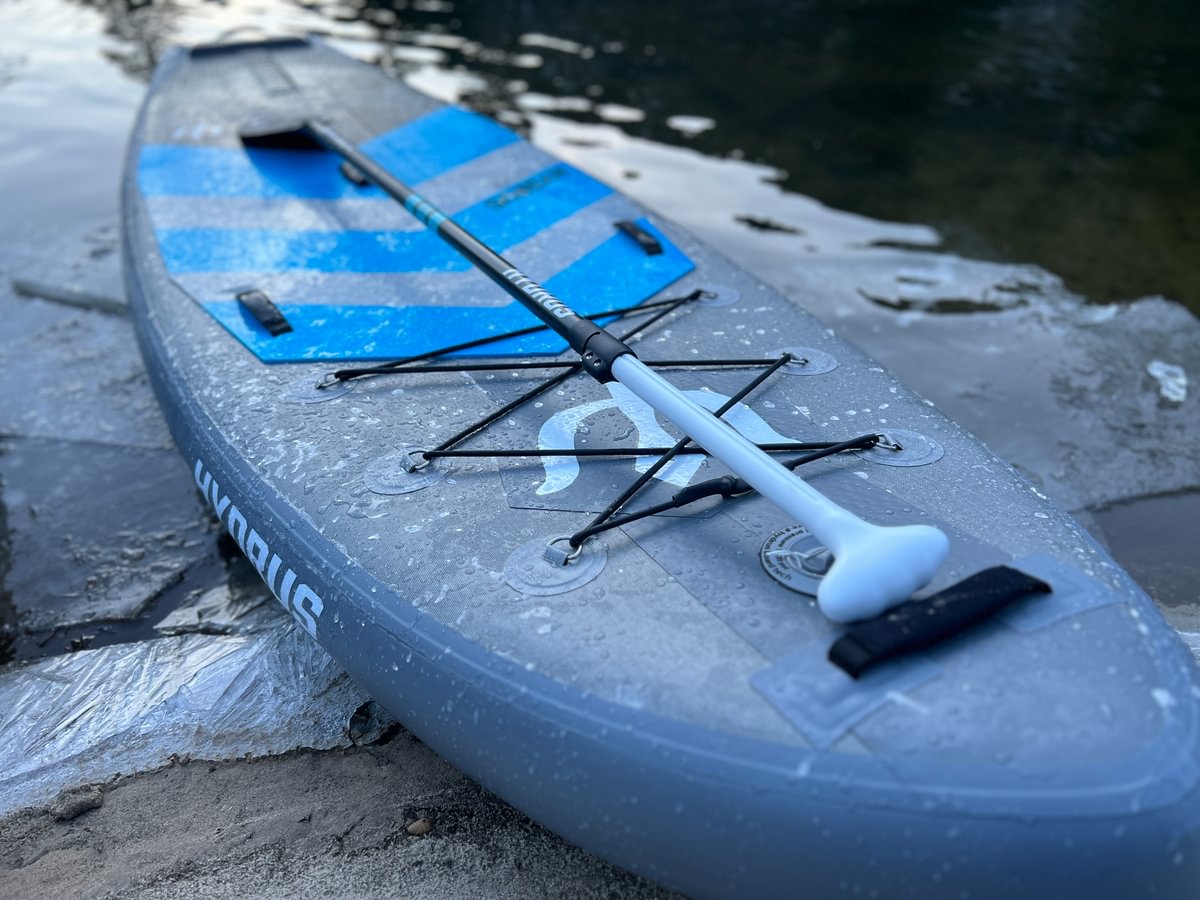Cold Water Safety Tips Every Paddler Should Know

Paddleboarding is one of the best ways to connect with the water year-round, but paddling in cold conditions brings extra challenges. Cold water is beautiful, refreshing, and often less crowded, but it can also be dangerous if you are not prepared. Knowing how to handle cold water paddling can make the difference between an unforgettable adventure and a dangerous situation.
At Hydrus, we believe every paddler should have the tools and confidence to paddle safely in all conditions. With the right gear, mindset, and preparation, cold water paddling can be safe, fun, and even empowering. Here are the most important cold water safety tips every paddler should know.
Why Cold Water Safety Matters

Cold water shock is real, and it can happen to anyone, no matter their skill level. When you fall into water below 70°F, your body can react with an involuntary gasp, rapid breathing, and a quick loss of coordination. Even the strongest swimmers can find themselves in trouble within seconds.
Understanding how your body reacts to cold water is the first step in staying safe. Preparation helps you respond calmly, conserve energy, and get back on your board or to shore. Remember that prevention is always easier than reaction when it comes to safety.
Dress for Immersion, Not for Air
One of the golden rules of cold water paddling is to dress for the water temperature, not the air. While a sunny 55°F day might feel comfortable on land, falling into 50°F water without protection can quickly turn dangerous. Always plan your clothing around what would keep you safe if you fell in.
Wetsuits for Cold Water Paddling
Wetsuits are one of the most popular options for cold water safety. A 4/3mm wetsuit or thicker is usually recommended for water below 60°F. Neoprene works by trapping a thin layer of water between the suit and your skin, which warms up as you move and keeps you insulated.
Full wetsuits with sealed seams, paired with neoprene gloves and booties, give you full-body protection. They also allow for flexibility and movement, which makes them a great choice for active paddlers who want to stay safe without feeling restricted.
Dry Suits for Maximum Protection

For paddlers who want complete insulation, a dry suit is the way to go. Unlike wetsuits, dry suits keep all water out, so you can layer thermal clothing underneath. This makes them ideal for very cold conditions or long-distance paddling where staying dry is crucial.
Dry suits are more expensive but are considered a long-term investment for paddlers who want to extend their season year-round. Many paddlers combine them with moisture-wicking and fleece layers, creating a system that is both comfortable and safe in icy conditions.
Always Wear a PFD
Your personal flotation device (PFD) is non-negotiable in cold water. Even if you are a strong swimmer, cold shock can make it nearly impossible to stay afloat. A PFD buys you critical time by keeping your head above water while you recover from the initial shock.
Look for a PFD that is comfortable and designed for paddling. Low-profile vests are great because they provide flotation without getting in the way of your paddle strokes. The right PFD gives you both freedom and safety, so there’s never a reason to paddle without one.
Use the Right Leash
Leashes save lives, especially in cold water, but you need the right one for the conditions. On flatwater lakes or calm bays, an ankle leash is fine. On rivers or moving water, a quick-release leash is a must. This allows you to disconnect instantly if your board gets caught on an obstacle.
Your board is your biggest flotation device, so staying connected to it is essential. Just make sure your leash setup matches your environment, so it works for you instead of against you.
Practice the 1-10-1 Rule
The 1-10-1 rule is a simple way to remember how your body reacts in cold water:
-
1 minute to get your breathing under control.
-
10 minutes of meaningful movement before your muscles become too cold to function.
-
1 hour before you risk unconsciousness from hypothermia.
By remembering the 1-10-1 rule, you can stay calm if you fall in. Focus first on controlling your breath, then on self-rescue, and finally on conserving heat if help is needed. Staying calm is half the battle.
Keep a Dry Bag with Essentials
A dry bag is more than just a convenience — it is a lifeline in cold water paddling. Always pack a set of dry clothes, a small towel, and maybe even a thermos of hot tea or cocoa. Having warm gear to change into after an unexpected swim can make the difference between a safe recovery and a dangerous situation.
You can also add safety tools like a whistle, a waterproof phone case, or a headlamp. A compact dry bag fits easily on your Hydrus board, and knowing you have it gives you confidence on the water.
Paddle with a Buddy
Cold water is not the time for solo adventures. Paddling with a buddy increases your safety dramatically, since you can help each other in case of a fall. Even better, paddling together makes the experience more fun and memorable.
If you must paddle solo, let someone know where you are going and when you plan to return. Simple communication can make a huge difference if something goes wrong. Think of it as part of your safety system, just like your PFD or wetsuit.
Plan for Shorter Paddles

Cold water paddling can be more tiring than summer sessions. The extra layers, the cool air, and the stress on your body all add up. Plan for shorter paddles and build up gradually as you gain confidence.
Staying close to shore is another smart move in cold water. It reduces risk, keeps rescue options within reach, and allows you to practice skills without overcommitting. Even short paddles can be incredibly rewarding when the scenery is crisp and peaceful.
Learn Self-Rescue Skills
Self-rescue is one of the most important cold water safety tips. Practice climbing back on your board quickly and efficiently, ideally while wearing your cold-water gear. The extra bulk of a wetsuit or dry suit can make remounting a little trickier, so you want to be comfortable doing it before you need it.
Learning different techniques — like the belly flop method or the roll-and-kick method — gives you options depending on conditions. Practicing these skills builds muscle memory so that in an emergency, your response feels natural.
Fuel and Hydration Still Matter
Even in cold conditions, your body burns energy quickly. Pack snacks that are easy to eat, like energy bars or trail mix, and make sure to drink water. It’s easy to forget hydration in cool weather, but dehydration affects your balance, strength, and focus.
Warm drinks can also boost morale and body temperature after a session. A simple thermos of tea or coffee can turn a chilly paddle into a cozy memory. Fueling your body is another layer of safety you don’t want to overlook.
Final Cold Water Paddling Tips

-
Always check the weather and water temperatures before heading out.
-
Avoid cotton — stick with quick-dry and insulating layers.
-
Carry safety essentials in a dry bag, including spare clothes.
-
Never underestimate the risks of cold shock, even in calm water.
-
Respect your limits and build your cold water paddling experience slowly.
With preparation, the right gear, and a smart mindset, paddling in cold water can be safe and deeply rewarding. The quiet waters, the crisp air, and the sense of accomplishment make it one of the best ways to enjoy paddleboarding year-round. At Hydrus, we want you to have unforgettable adventures, and staying safe is always the first step.

About the Author
Angela Nichole leads customer experience and creative direction at Hydrus Board Tech. A CrossFit and yoga instructor with a background in functional fitness and wellness, Angela writes to empower paddlers of all levels. With a passion for movement, community, and quality gear, she brings a grounded and inclusive voice to the Hydrus blog. Angela plays a key role in shaping the Hydrus experience on the water, behind the scenes, and through every customer connection. Get to know Angela here.




Leave a comment